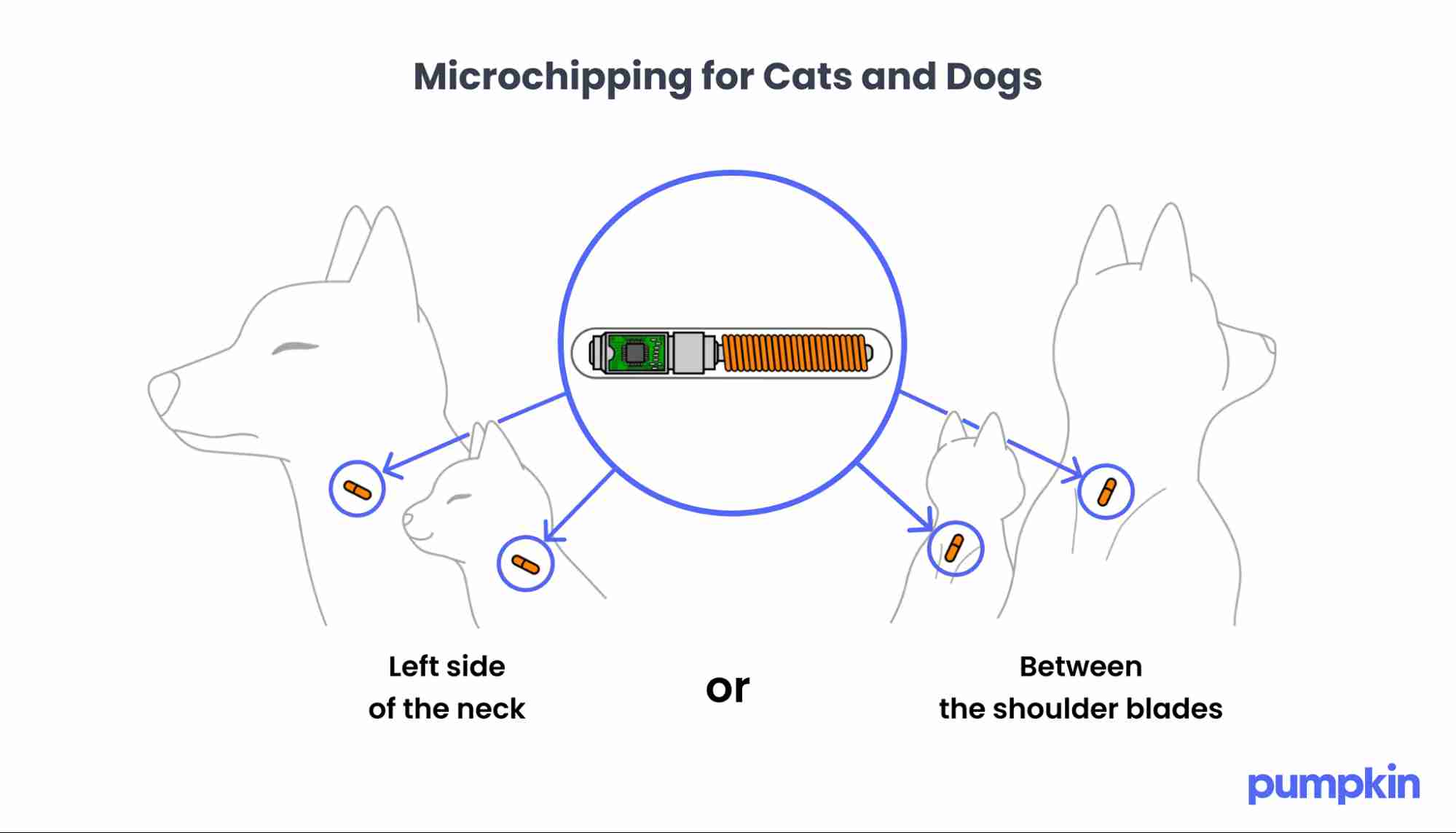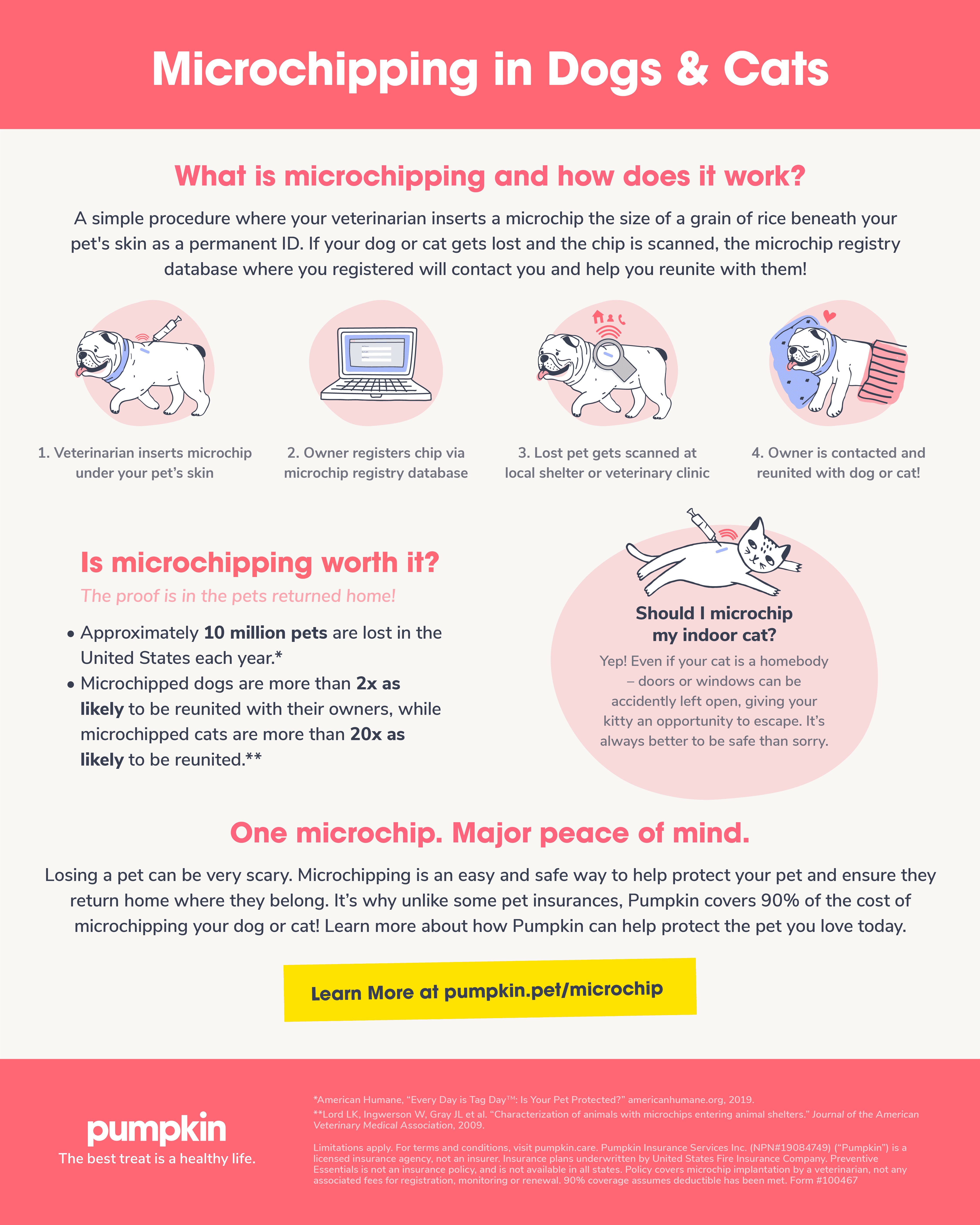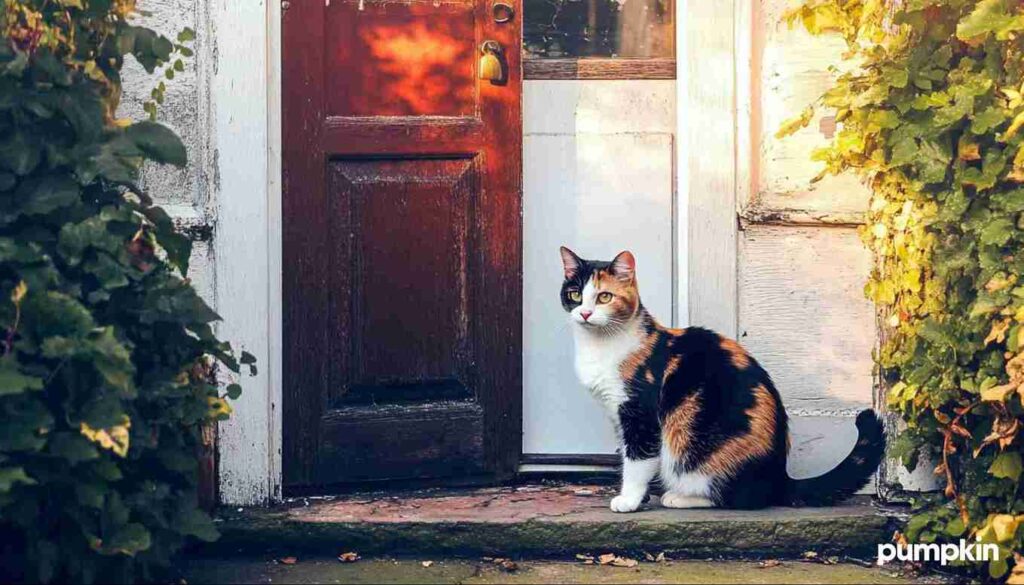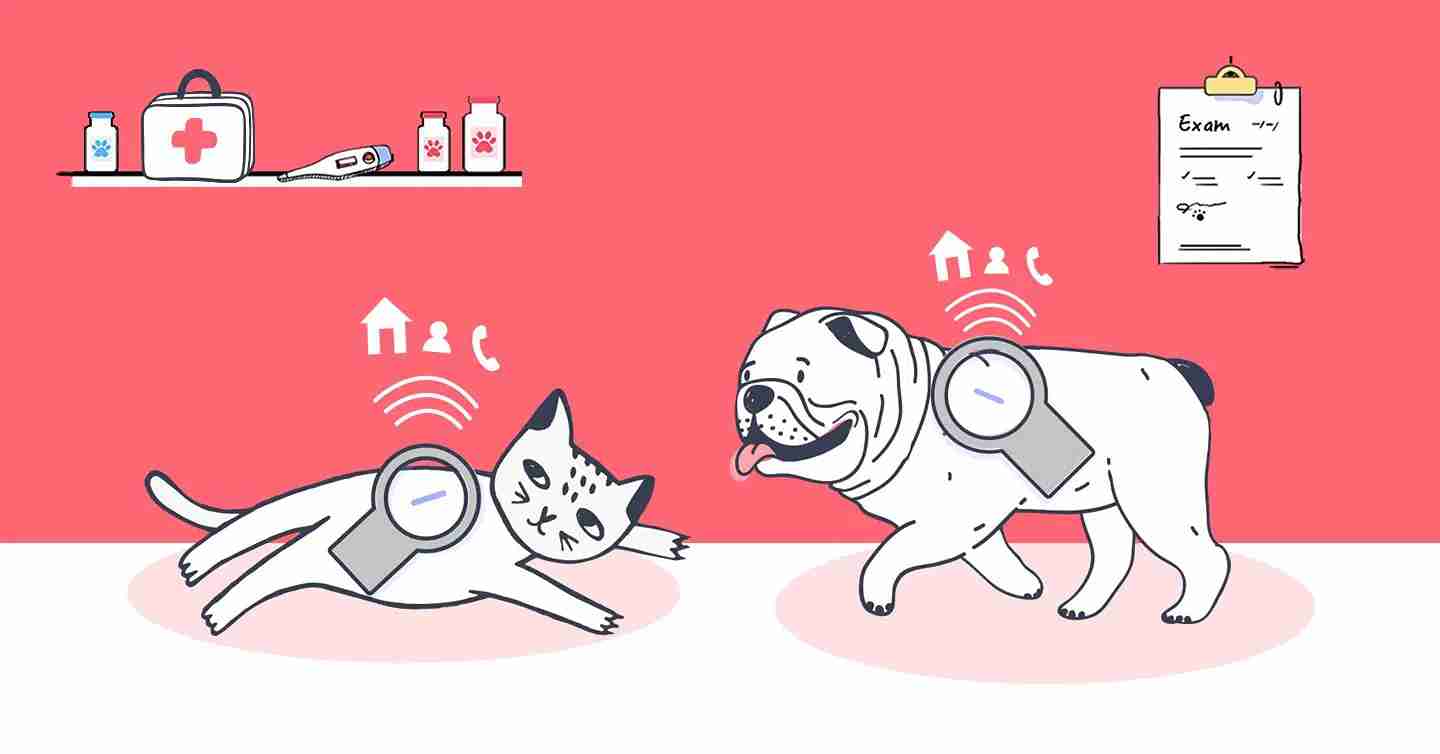Key Points
- Microchipping is a simple procedure in which a microchip is placed underneath your pet’s skin so they can be easily identified if they get lost.
- The procedure is about as painful as a general vaccination, and some pets won’t even notice.
- Lost dogs with microchips are more than twice as likely to be reunited with their owners; lost cats with microchips are 20 times more likely to be reunited.
Did you know that more than 6.5 million animals ended up in U.S. shelters in 2023? And not all of those animals were unwanted. Heartbreakingly, many pet parents never reunite with lost pets because they can’t find them.
If you’re here, chances are you’re a proud pet parent. Perhaps your furry friend is snuggled up beside you now — dreaming about their next romp through the neighborhood. Fortunately, there’s an easy way to avoid contributing to this statistic — microchipping in dogs and cats is a safe and effective way to find your pet should they ever get lost.
In this article, we’ll examine how microchipping works and answer common questions about this simple procedure, including how much it costs to microchip your dog or cat.
What is microchipping?
Microchipping in pets is a simple procedure where a veterinarian inserts a tiny microchip underneath the pet’s skin.
The microchip is a small-scale radio transponder with a unique reference or identification number specific to your pet. The device is no larger than a grain of rice, making it completely undetectable by you or your pet without special equipment.
Once you’ve microchipped your pet, you’ll receive instructions on how to register your microchip and personal information with a reputable microchip registry database, like one of these:
- Home Again
- PetKey
- AKC Reunite
- Free Pet Microchip Registry
- Found Animals
- AVID
- PetLink
- 24PetWatch
- Homeward Bound Pet
- BeKind PetFind
- SmartTag
What microchips can’t do
While microchipping is a great safety net, it isn’t a replacement for an identification tag on their collar. Some pet parents also mistakenly believe that microchips act like a Bluetooth or GPS tracker for their pet. You can buy GPS tracking devices and smart collars that track your pet’s location 24/7, but microchips are a passive form of identification.
When a lost pet ends up at a vet’s office or animal shelter, the staff will check for a microchip. If your pet has one, they’ll be able to contact you to reunite you with your pet.
The microchipping procedure
Microchipping is a quick procedure that any licensed veterinarian can perform. The microchip, no larger than 12mm long, is inserted between the shoulder blades or on the left side of the neck just under your pet’s skin.

The device can even be inserted during a regular check-up using a slightly larger gauge needle than the one used for vaccinations.
If you feel like your pet is particularly skittish or easily spooked, the procedure can be added to an already scheduled spay/neuter procedure or dental cleaning.
Does microchipping hurt?
Every animal is different. Some will be distracted enough not to notice the microchip being inserted, while others may feel slight discomfort.
It’s important to remember that thousands of microchips are put into cats and dogs every day. Most of these routine procedures are done without a hiccup, even while the pet is awake.
Most veterinarians also have tips and tricks for keeping pets as calm and comfortable as possible during the procedure.
Veterinarian Dr. Stacy Johnson, who has worked with Pumpkin over the years, shared one of her tips: “For vaccinations, nail trims, and microchipping, I like to practice the ‘art of distraction.’ For instance, I often have my food-motivated patients munch on a mix of kibble and treats during these procedures, making them almost unnoticeable! For this reason, I always recommend bringing your pet’s favorites to the appointment.”
While Dr. Johnson also noted that some pets will feel a quick pinch during insertion, she doesn’t believe this should deter pet owners. “As someone who has experienced the joy of reuniting families with their pets — this simple procedure is definitely worthwhile!”
How much does it cost to microchip your dog or cat?
Microchipping is not only safe but also a cost-effective way to ensure your pet’s safety. According to the vets we consulted, the average cost of microchipping is between $30 and $60, including registration in a nationally recognized database. Though, the cost of the procedure will vary from clinic to clinic.

How do microchips work?
Electronic microchips use Radio Frequency Identification (RFID). With a registered chip, a quick scan will reveal the owner’s contact information (such as an email address or phone number).
Each microchip has a different signature, like a unique barcode for your pet. The chip itself has no power source. It simply stores a code that waits to be read by a microchip scanner.
Remember that to properly ID a lost pet, the microchip and scanner must be in good working order, and the registry in the chosen national database must be accurate. An inaccurate or outdated registry can result in your pet not being found.
What is the ISO standard?
The ISO standard creates an identification system that scanners can recognize worldwide.
In the past, your pet’s microchip may have emitted a different frequency than the microchip implanted in your neighbor’s pet. That means a scanner that only recognizes a specific frequency might be able to ID one cat or dog, not another. Today, thanks to the ISO standard, if a pet tagging along on an international vacation gets lost and ends up in a local public shelter, they can still find their way home.
Pro tip: If you’re traveling internationally or to an island destination with a new pet, Dr. Johnson recommends microchipping first and then vaccinating your pet for rabies. “When traveling to locations like Hawaii, you may need a rabies titer blood test and proof of identification, which is your pet’s microchip.”
Once you’ve taken steps to keep your pet safe, why not go the extra mile to protect their health, too?
Pumpkin Pet Insurance plans can help cover eligible vet bills for future accidents and illnesses, letting you focus on caring for your pet instead of pulling your hair out over unexpected costs.
Do microchips have side effects?
Though problems with microchips are incredibly rare, they can happen. Some of the most common microchip side effects for dogs and cats include:
- Moving from the original microchip implantation site
- Failure of the chip
- Hair loss
- Infection
- Swelling
While there is anecdotal evidence of cancerous tumors appearing at the site of the insertion, there’s no evidence that microchips should be considered a causal factor. When it comes to microchipping, the benefits far outweigh the risks.
Is microchipping your dog or cat worth it?
It may be easy to weigh the pros and cons of microchipping your pet now, but turning back the clock is impossible if they go missing.
The American Veterinary Medical Association (AVMA) reports that dogs with microchips are more than twice as likely to be returned to owners, and microchipped cats are over 20 times more likely to be returned. Pets as far as 500 miles from home have even been reunited with their families after several years of being missing. After microchips became mandatory in the United Kingdom in 2016, researchers found that more stray dogs were reunited with owners and fewer dogs were euthanized by shelters.
It’s clear: Microchipping your dog or cat greatly increases the chances of them being found if they run away or get lost.
If my cat never goes outdoors, do they still need a microchip?
The short answer is yes. As stated above, microchipped cats are much more likely to be returned home if they get lost.
Even the most responsible cat owners can’t 100% guarantee their cat will never get lost. Situations that present escape opportunities, like a door accidentally left open or your cat pushing through a loose window, can occur at any time.

Additionally, indoor cats are unfamiliar with their outside environment, making it even more difficult for them to find their way back home. They’ll also be more frightened and anxious about being in the outside world, which can be traumatic.
Where can I buy a microchip?
You can buy your pet’s microchip at your local veterinary clinic at the same time they perform the implantation procedure. Most clinics have their preferred microchip companies, so the microchip you buy will likely be one that your veterinarian trusts and regularly carries at their clinic.
While we recommend going this route, there are also a number of providers and retailers where pet owners can buy microchips directly. These are some of the most popular microchips on the market today:
- Schering-Plough by Home Again
- 24 Pet Watch by Allflex
- Petlink
- AKC-CAR by Trovan
- The Friendchip by Avid
Avoid home kits or anything that asks you to insert microchips on your own. It’s best to let a licensed veterinary professional perform the procedure to prevent an error or injury. If you want even more peace of mind, invest in a smart pet collar with GPS tracking.
FAQsabout microchipping
- https://www.aspca.org/therescueeffect
- https://science.howstuffworks.com/innovation/everyday-innovations/pet-microchip1.htm
- https://www.avma.org/resources-tools/pet-owners/petcare/microchips-reunite-pets-families/microchipping-faq
- https://www.avma.org/sites/default/files/2024-07/mcm-check-the-chip-infographicv2-2024.pdf
- https://www.sciencedirect.com/science/article/abs/pii/S0167587718305099




